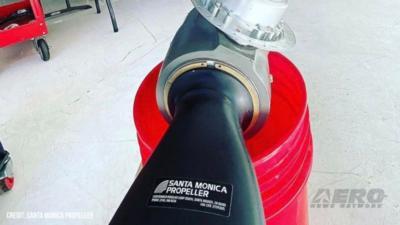Sun, Apr 21, 2024
NTSB Issues Safety Alert on Aluminum Prop Blades
Aviation authorities have recently emphasized the critical importance of regular and thorough inspections of aluminum propeller blades, especially for aircraft frequently operating in harsh environments such as backcountry, aerial application, and coastal areas.

These guidelines aim to enhance the safety and airworthiness of the fleet by preventing propeller blade failures that could result in severe accidents.
The recommended practices focus on meticulous inspections at various stages of a propeller's operational lifecycle. Maintenance personnel are advised to follow a systematic approach by adhering to the maintenance manual and employing detailed checklists. This includes inspecting every part of the propeller, especially the leading edges and back sides of the blades, which are prone to damage. Sections of larger propellers should be marked off to ensure no area is overlooked.
Utilizing optimal lighting conditions and magnification tools is crucial for identifying any potential damage, especially those that might be concealed by cosmetic painting. This attention to detail helps in detecting underlying issues that could compromise the propeller's integrity and functionality.

Moreover, post-maintenance checks are highly recommended, involving a secondary review by another qualified individual, which could be another mechanic or a pilot, depending on the type of repair. This practice is aimed at ensuring that all maintenance work meets the necessary safety standards.
For aircraft not governed by standard overhaul timelines, such as public aircraft and certain parts of private operations, it is advised to maintain propellers strictly according to the manufacturer’s guidelines. This includes adhering to recommended overhaul schedules and keeping detailed records of all inspections and repairs in the propeller logbook.
The FAA's Advisory Circular AC 20-37E on Aircraft Propeller Maintenance and other service documents provide comprehensive guidance on maintaining propeller blades. These documents are vital for keeping maintenance personnel updated on best practices and new technological advancements in propeller maintenance.
As aircraft operations continue to evolve, the emphasis remains on ensuring that all components, particularly propellers, are maintained to the highest safety standards. This proactive approach in regular maintenance and inspection is essential for the safety of the aviation industry.
More News
Aero Linx: Transport Canada We are a federal institution, leading the Transport Canada portfolio and working with our partners. Transport Canada is responsible for transportation p>[...]
Gross Navigation Error (GNE) A lateral deviation from a cleared track, normally in excess of 25 Nautical Miles (NM). More stringent standards (for example, 10NM in some parts of th>[...]
From AirVenture 2017 (YouTube Edition): Flight-Proven Booster On Display At AirVenture… EAA AirVenture Oshkosh is known primarily as a celebration of experimental and amateu>[...]
Aircraft Parachute System (CAPS) Was Deployed About 293 Ft Above Ground Level, Which Was Too Low To Allow For Full Deployment Of The Parachute System Analysis: The day before the a>[...]
Also: 48th Annual Air Race Classic, Hot Air Balloon Fire, FAA v Banning 100LL, Complete Remote Pilot The news Piper PA-18 Super Cub owners have been waiting for has finally arrived>[...]
 ANN's Daily Aero-Linx (06.29.25)
ANN's Daily Aero-Linx (06.29.25) ANN's Daily Aero-Term (06.29.25): Gross Navigation Error (GNE)
ANN's Daily Aero-Term (06.29.25): Gross Navigation Error (GNE) Classic Aero-TV: Anticipating Futurespace - Blue Origin Visits Airventure 2017
Classic Aero-TV: Anticipating Futurespace - Blue Origin Visits Airventure 2017 NTSB Final Report: Cirrus SR22
NTSB Final Report: Cirrus SR22 Airborne Affordable Flyers 06.26.25: PA18 Upgrades, Delta Force, Rhinebeck
Airborne Affordable Flyers 06.26.25: PA18 Upgrades, Delta Force, Rhinebeck




